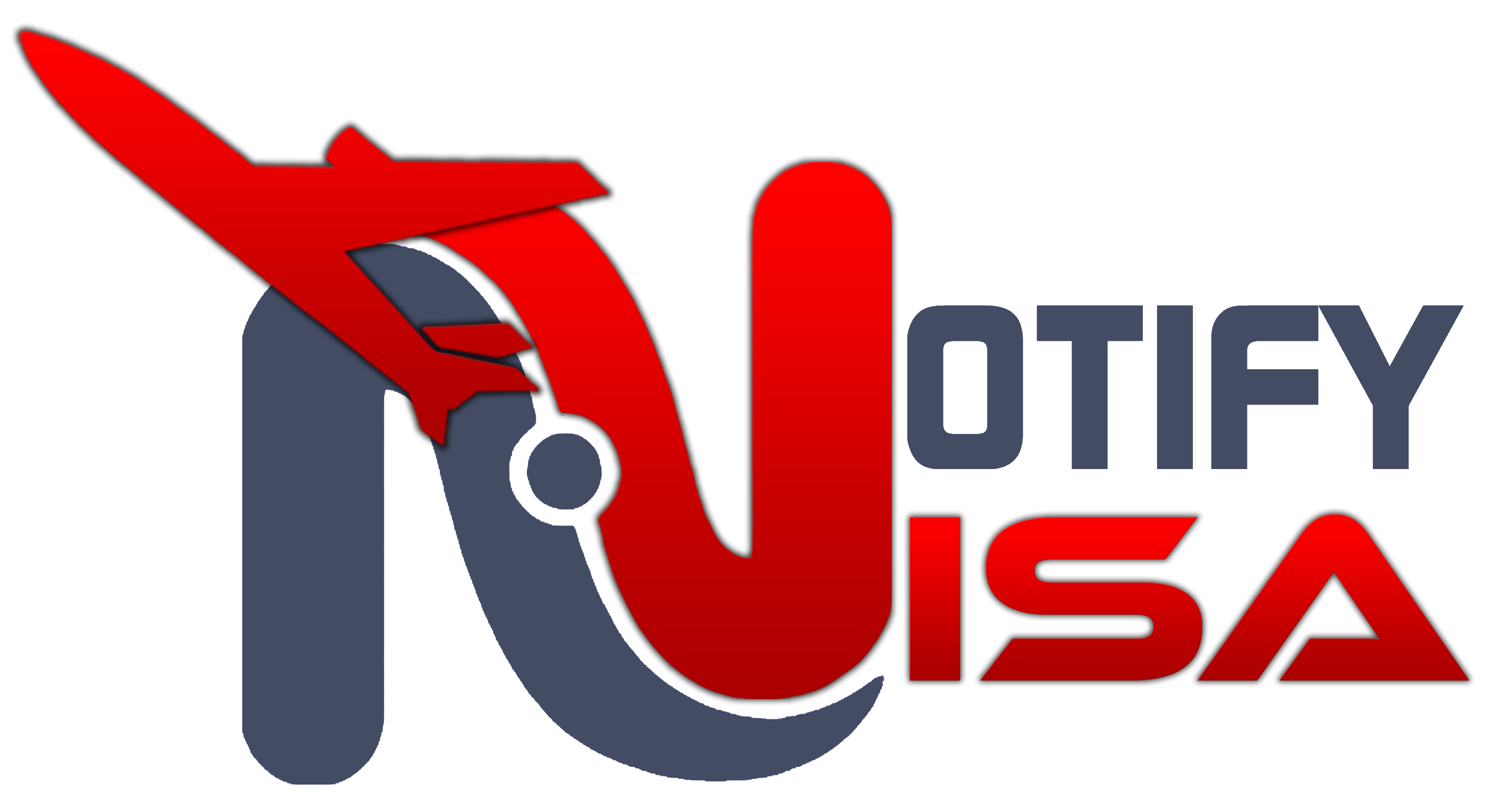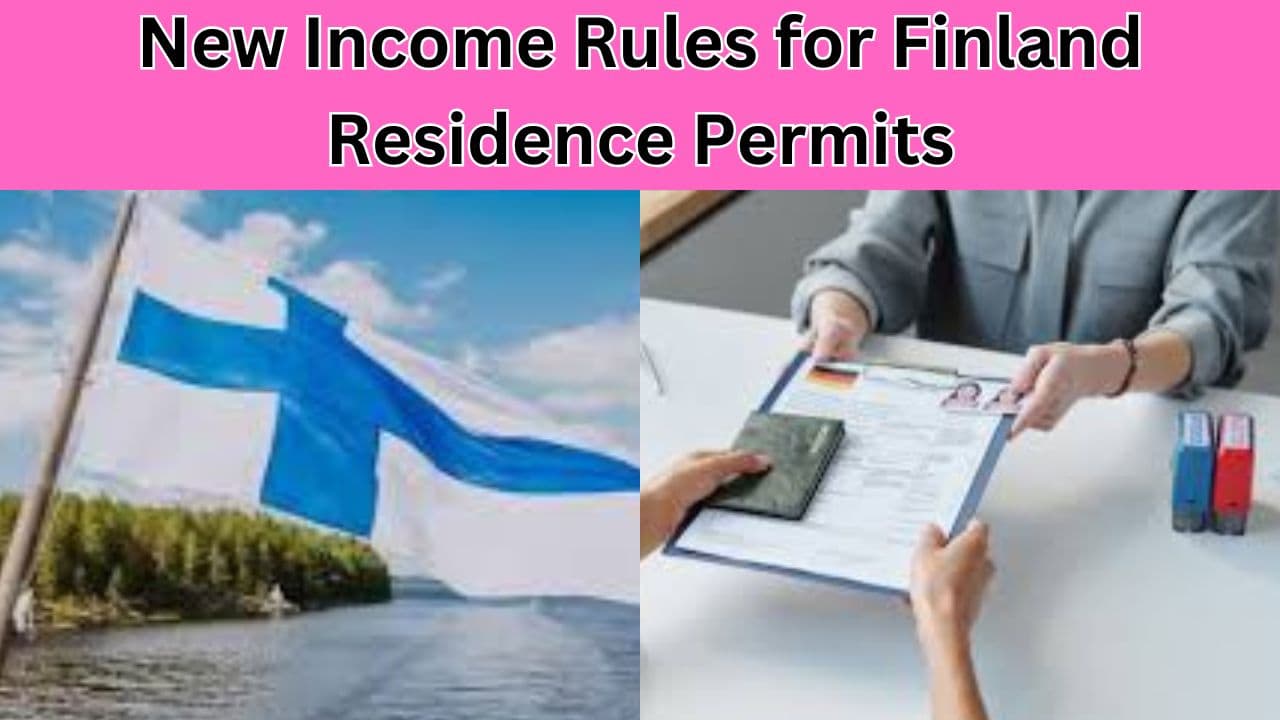This comprehensive tutorial will teach you how to obtain a Canada LMIA (Labour Market Impact Assessment) and work visa. Get the procedures for accepting job offers, applying for an LMIA, applying for a passport, biometrics, and medical tests. Recognize the required paperwork, the timeframes for processing, and fraud prevention advice. With this thorough description, you can guarantee a seamless application process and raise your chances of success.
Read Also: Canada Approves 1,500+ LMIA Jobs and How to Apply
Acknowledging Work Permits and LMIAs in Canada:
What is LMIA?
- Canadian firms may require the Labour Market Impact Assessment (LMIA) before employing a foreign worker. Employment and Social Development Canada oversees the administration of the LMIA process (ESDC). If no Canadian worker can fill the position, a positive LMIA implies that a foreign worker must do so.
What is a Work Permit?
- A work permit is an official document that gives a foreign citizen the right to work in Canada for a certain employer for a specific time. It contains information on the employer, including name, job title, work location, and length of employment.
A Step-by-Step Guide to the Work Permit and LMIA Process:
Obtaining a Job Offer and LMIA
Job Offer:
- An international job applicant is first extended an offer of employment by a Canadian firm. It must be a legitimate job offer that satisfies ESDC regulations.
- Through advertising and other recruitment efforts, employers must prove that they have attempted to hire a Canadian citizen or permanent resident before anything else.
Applying for LMIA:
- After receiving a job offer, the employer applies to ESDC for an LMIA. Information regarding the employment, the foreign worker, and the employer are all included in this application.
- The employment contract, documentation of recruitment efforts, and, if relevant, a business plan are among the documents that must be submitted as part of the LMIA application process.
LMIA Processing Time:
- Many factors, such as the nature of the work and the area, might affect how long it takes to process an LMIA. Typically, it requires a few weeks to many months.
- The Canadian labor market won’t be adversely affected by hiring a foreign worker, according to a positive labor market impact assessment (LMIA).
How to Apply for a Work Permit?
Submission of an Application:
- The foreign worker may apply for a work permit upon receiving a positive LMIA. The application is received by Immigration, Refugees and Citizenship Canada (IRCC).
- The LMIA, the letter of employment offer, the passport, the qualification evidence, and occasionally the proof of funds are required documents.
Forms for Applications:
- The IMM 1295 (Application for Work Permit Made Outside of Canada), IMM 5645 (Family Information), and IMM 5476 (Use of a Representative), if appropriate, are among the forms that must be completed to submit a work permit application.
Documents in Support:
- It can be necessary for applicants to submit further paperwork, like a CV, employment references, and certificates of schooling.
- To prevent delays, it is essential to make sure that all documents are exact and comprehensive.
Biometrics and Physical Examination
Biometrics:
- A biometrics instruction letter will be sent to applicants after their work permit application has been submitted. They have to go to a designated Visa Application Centre (VAC) and supply their fingerprints and a photo.
- Biometrics are utilized for security screening and identity verification of applicants.
Medical Assessment:
- Depending on the position and the applicant’s home country, a medical exam can be necessary. This is frequently the case for positions in child care, healthcare, or any other field where there is direct interaction with the public.
- An IRCC-approved panel physician is required to do the medical examination. The results are valid for a full year and are forwarded straight to the IRCC.
Decision-Making Process and Time
Time Spent Processing:
- A work permit application’s processing period can vary greatly; it usually takes a few weeks to several months. The applicant’s place of residency, the nature of the work, and the processing office’s workload all affect how long the application takes to process.
Application Choice:
- Following application processing, the IRCC will render a determination. The applicant will receive a letter of introduction and, if necessary, a temporary resident visa (TRV) in their passport if their application is accepted.
Passport Request (PPR) and Work Permit Issuance
Request for Passport (PPR):
- The IRCC will ask for the applicant’s passport to be stamped with their visa if their work permit application is accepted. This procedure validates the TRV’s issue, enabling the applicant to enter Canada.
Getting the Permit to Work:
- In Canada, a real work permit is granted at the port of entry. The applicant must show a Canadian Border Services Agency (CBSA) officer their visa, letter of introduction, and any other pertinent documentation upon arrival.
- After checking the paperwork, the CBSA officer will provide the work permit if everything is in order. The terms of employment, including the employer, the work location, and the duration of validity, will be outlined in this agreement.
Tips for Avoiding Clear of Fraud and Selecting the Correct Consultant
- Check the credentials of the consultant: Verify the consultant’s registration with the Immigration Consultants of Canada Regulatory Council (ICCRC). On the official ICCRC website, you can check their current status.
- Research and Reviews: Look for testimonials and evaluations from prior customers. A reputable consultant will be well-reviewed and well-known.
- Steer Clear of Guarantees: Be wary of individuals who promise you a job placement or a work permit. There is no guarantee regarding the application process’s outcome.
- Obtain a Written Agreement: Make sure that all services and associated costs are specified in a written agreement. This makes expectations clear and safeguards both sides.
Conclusion:
In Canada, obtaining a work permit and completing the LMIA is an organized, multi-step process that needs to be well planned out and understood. Every step of the process, from getting a job offer and LMIA to passing the biometrics and medical exams, is essential to getting a work permit.




Conoce como Ramos dejo su huella en la seleccion espanola | Conoce el legado de Sergio Ramos en el futbol mundial | Conoce los datos mas recientes de Ramos en el mundo del futbol | Informate sobre los records de Ramos en La Liga y Europa | Descubre la historia de Ramos en la seleccion de Espana | Descubre el rol de Ramos en el PSG y su contribucion al club | Descubre el compromiso de Ramos con sus clubes y la seleccion | Conoce el impacto de Ramos en la defensa espanola | Descubre los records de Ramos en la seleccion y en club, Sergio Ramos en PSG PSG Sergio Ramos.
Надёжный букмекер для азартных игроков – это Мостбет | Удобные условия для ставок с Мостбет в Казахстане | Азартные игры с быстрыми выплатами – только на Мостбет | Получите шанс на выигрыш с бонусами от Мостбет | Зарегистрируйтесь на Мостбет и получите бонус на ставки | Играйте в любые азартные игры на Мостбет с бонусами | Качественные слоты и быстрые выплаты на Мостбет | Играйте в слоты и выигрывайте реальные деньги на Мостбет | Ставки и казино в одном месте – это Мостбет, мобильное приложение Mostbet мобильная версия Мостбет.
Lee sobre el impacto de Pogba en el Juventus | Conoce al hermano de Pogba y su impacto en el futbol | Explora los detalles de las transferencias de Paul Pogba | Lee la biografia completa de Paul Pogba | Lee sobre los equipos por los que ha pasado Pogba | Conoce el papel de Pogba en Juventus y PSG | Informate sobre los retos y exitos de Pogba en su vida | Descubre el papel de Pogba en el equipo de Francia | Explora los momentos clave en la vida de Pogba, Pogba en Juventus Juventus Paul Pogba.
Descubre la historia de Ronaldinho, un icono del futbol | Conoce el legado de Ronaldinho en el futbol mundial | Informate sobre la conexion de Ronaldinho con sus fans | Conoce el impacto de Ronaldinho en Barcelona y PSG | Descubre como Ronaldinho influyo en la proxima generacion | Descubre la vida privada de Ronaldinho y su familia | Explora los momentos de Ronaldinho que hicieron historia | Explora los records y premios de Ronaldinho en su carrera | Conoce la historia de Ronaldinho, el mago del balon, informacion de Ronaldinho https://ronaldinho-es.org.
Надёжный букмекер для азартных игроков – это Мостбет | Мостбет – официальный сайт с высоким рейтингом доверия | Мостбет – это ваш идеальный выбор для азартных игр | Ставки на спорт и киберспорт – это всё есть на Мостбет | Легкий доступ к ставкам на сайте и приложении Мостбет | Найдите выгодные ставки на спорт в Казахстане с Мостбет | Рабочее зеркало и доступ к Мостбет в любое время | Мостбет – это ваш путь к крупным выигрышам | Лучшие бонусы и акции на официальном сайте Мостбет, рабочее зеркало Мостбет на сегодня https://mostbetkzcasino.kz.
Conoce la historia de superacion de Vinicius Junior | Explora el impacto de Vini Jr. en el equipo de Brasil | Descubre los premios y reconocimientos de Vinicius | Conoce los datos sobre la posicion y equipo de Vinicius | Explora el camino de Vinicius desde su infancia hasta el estrellato | Descubre como Vinicius inspira con su juego y habilidad | Informate sobre el perfil y logros de Vini Jr. en FIFA | Explora los logros de Vinicius en la Champions League | Descubre como Vini Jr. se ha ganado el respeto en el futbol, Vinicius y sus exitos Exitos Vinicius.
Descubre como Marcelo ha inspirado a los jovenes futbolistas | Explora los logros y premios de Marcelo en su carrera profesional | Conoce los momentos mas importantes de Marcelo en la Champions League | Descubre como Marcelo se ha convertido en un icono en el futbol | Informate sobre la influencia de Marcelo en el futbol mundial | Descubre el talento y disciplina de Marcelo en el futbol | Conoce los valores y principios que guian a Marcelo en su carrera | Descubre como Marcelo ha evolucionado en su estilo de juego | Explora las mejores jugadas y habilidades de Marcelo en el campo, vida y logros de Marcelo Logros de Marcelo</url].
Испытайте высокое качество игр в Mostbet | Используйте акции и промокоды на Mostbet для большего выигрыша | Ставьте на спортивные события с выгодными условиями на Мостбет | Попробуйте удачу в играх и ставках с Mostbet | Используйте возможности Mostbet на полную | Здесь можно делать ставки на все виды спорта | Погрузитесь в мир онлайн-казино с Mostbet | Оцените бонусную программу для постоянных игроков в Мостбет | Наслаждайтесь лучшими игровыми автоматами на Mostbet http://www.mostbetkzcasino.com.kz.
budva real estate Montenegro property to buy
Займ 250 000 тенге Sravnim.kz
провести соут в москве проведение соут
Decouvrez les meilleures options pour les paris en ligne sur Mostbet Maroc | Rejoignez Mostbet pour une experience de pari unique au Maroc | Gagnez des bonus en vous inscrivant sur le site officiel de Mostbet mostbet casino mostbet casino.
Займ 150 000 тенге Займ 200 000 тенге
специальная оценка условий труда цены москва https://sout095.ru
Beneficiez d’un support client disponible 24/7 | Le telechargement de l’application Mostbet est rapide et facile | Pariez en toute securite avec l’application Mostbet Maroc | Jouez en ligne en toute confiance avec Mostbet | Retrouvez des cotes avantageuses sur Mostbet pour chaque evenement | Accedez a des jeux de qualite superieure sur Mostbet Maroc | Mostbet garantit des paiements rapides et sans tracas | Obtenez de l’aide instantanee du support client de Mostbet | Jouez avec des cotes imbattables sur Mostbet Maroc telecharger mostbet site officiel telecharger mostbet site officiel.
прокат сноубордов красная Красная Поляна прокат сноуборда и горных лыж Красная Поляна
Des prix competitifs et des bonus exceptionnels sur Mostbet | Decouvrez les caracteristiques et les fonctionnalites des jeux Mostbet | Mostbet Maroc garantit des cotes attractives pour chaque match | Decouvrez les avantages de Mostbet pour les joueurs marocains | Des bonus de bienvenue sont disponibles sur Mostbet | Beneficiez de la diversite des jeux de casino en ligne sur Mostbet | Des bonus reguliers sont offerts aux utilisateurs de Mostbet | Les jeux de casino Mostbet sont accessibles sur mobile | Mostbet vous offre des opportunites de gains elevees telecharger casino mostbet http://www.telecharger-mostbet-maroc.com.
Experimente a plataforma Mostbet e explore uma variedade de jogos | Explore o jogo Aviator no site do Mostbet Brasil | Use o aplicativo Mostbet para apostas rapidas e convenientes | Jogue no cassino Mostbet com uma variedade incrivel de slots | Aproveite as odds vantajosas do Mostbet para apostas esportivas | O Mostbet tem tudo o que voce precisa para apostas esportivas | Baixe o Mostbet apk e esteja sempre pronto para apostar | Aposte com o Mostbet e aproveite um cassino completo | Ganhe premios e bonus em todos os jogos do Mostbet Brasil site mostbet site mostbet.
Используйте рабочее зеркало Мостбет и играйте без преград | Ищите надежное онлайн-казино? Мостбет вам понравится | Играйте в любимые слоты в Mostbet Casino онлайн | Ставьте с высоким коэффициентом в Мостбет и выигрывайте | Попробуйте новый слот Aviator на Mostbet | Используйте бонусы для большего выигрыша на Мостбет UA | Скачайте Мостбет и делайте ставки без ограничений | Актуальные зеркала позволяют зайти на Мостбет всегда | Используйте зеркало Мостбет для доступа в любой момент https://mostbet-ua-casino.kiev.ua
Jogue em cassinos e faca apostas esportivas com Mostbet | Experimente os novos jogos e promocoes do Mostbet | Mostbet – o lugar ideal para jogos e apostas | Aproveite todas as oportunidades de apostas no Mostbet | Lider em apostas, o Mostbet e confiavel no Brasil mostbet mobile
Отримайте бонуси та вигоди в казино Mostbet | Переваги гри на Mostbet – високі виграші та великий вибір слотів | Починайте грати на Mostbet та відчуйте азарт перемог | Грайте та вигравайте з Mostbet у будь-який час | Грайте в Mostbet та отримуйте щедрі бонуси most bet casino
Mostbet O‘zbekistonda eng yaxshi o‘yin tanlovlarini taklif etadi | Mostbet-ning yuqori sifatli o‘yinlari va tez to‘lovlari bilan tanishing | Mostbet mobil ilovasini yuklab oling va o‘zingizga qulay joyda o‘ynang | Mostbet saytida muntazam yangilanib turuvchi aksiyalar va bonuslar mavjud | Mostbet-da yuqori darajadagi o‘yinlar va yutuqlarni sinab ko‘ring mostbet o’yinlari
Mostbet – ідеальний вибір для ставок на спорт в Україні | Зручний додаток mostbet для вашого комфорту | Mostbet – ваш надійний партнер для ставок в Україні | Вигравайте разом з mostbet на улюблених іграх | Мостбет пропонує найкращі слоти для азартних ігор http://www.mostbetregistration.kiev.ua
Мостбет казино – ваш шлях до великих виграшів | Офіційний сайт mostbet чекає на вас | Мостбет Україна – найкращі можливості для азартних ігор | Скачайте мостбет і грайте без обмежень | Відкрийте світ азарту з мостбет https://mostbet-ua-casino.kiev.ua/
Mostbet-ning rasmiy saytida doimiy aksiyalar va bonuslar | Mostbet-da to‘g‘ri tanlov qiling va katta yutuqlarga erishing | Mostbet orqali har kuni yangi aksiyalar va bonuslar | Mostbet onlayn kazino va sport turlari uchun eng yaxshi joy | Mostbet-da yangi o‘yinlarni sinab ko‘ring va katta yutuqlar qo‘lga kiriting mostbet aviator yuklash
Download the Mostbet app for easy access | Win amazing prizes with Mostbet bonuses | Enjoy live casino games with Mostbet Bangladesh | Mostbet live casino brings excitement to your fingertips | Enjoy thrilling live games on Mostbet casino | Win massive jackpots with Mostbet’s exclusive games Mostbet live casino.
Sign up for Mostbet and start winning | Mostbet casino provides a wide variety of games | Enjoy live casino games with Mostbet Bangladesh | Mostbet login gives you access to endless gaming options | Play responsibly with Mostbet Bangladesh | Join Mostbet for a chance to win exciting rewards Mostbet online gaming.
Explore Mostbet Bangladesh for great gaming experiences | Bet on your favorite sports with Mostbet in Bangladesh | Mostbet app delivers the ultimate betting experience | Win massive jackpots with Mostbet casino games | Enjoy 24/7 customer support on Mostbet Bangladesh | Bet anytime, anywhere with Mostbet app download | Mostbet APK download is fast and reliable Mostbet official site.